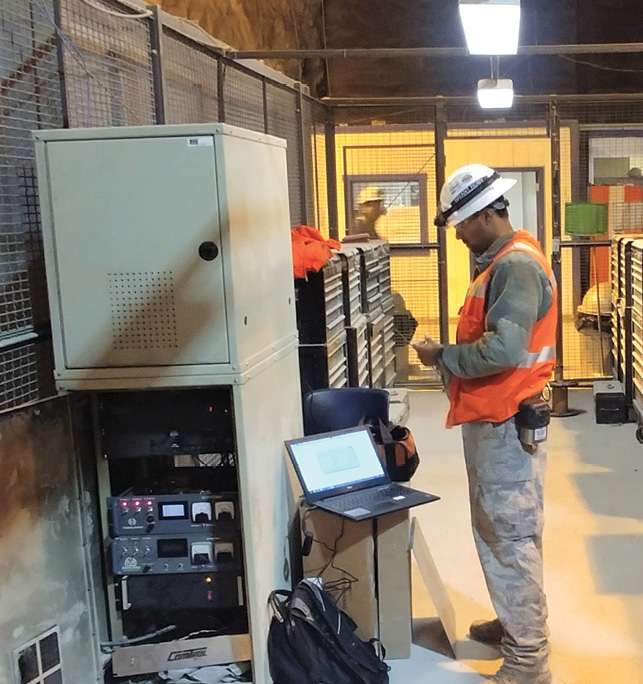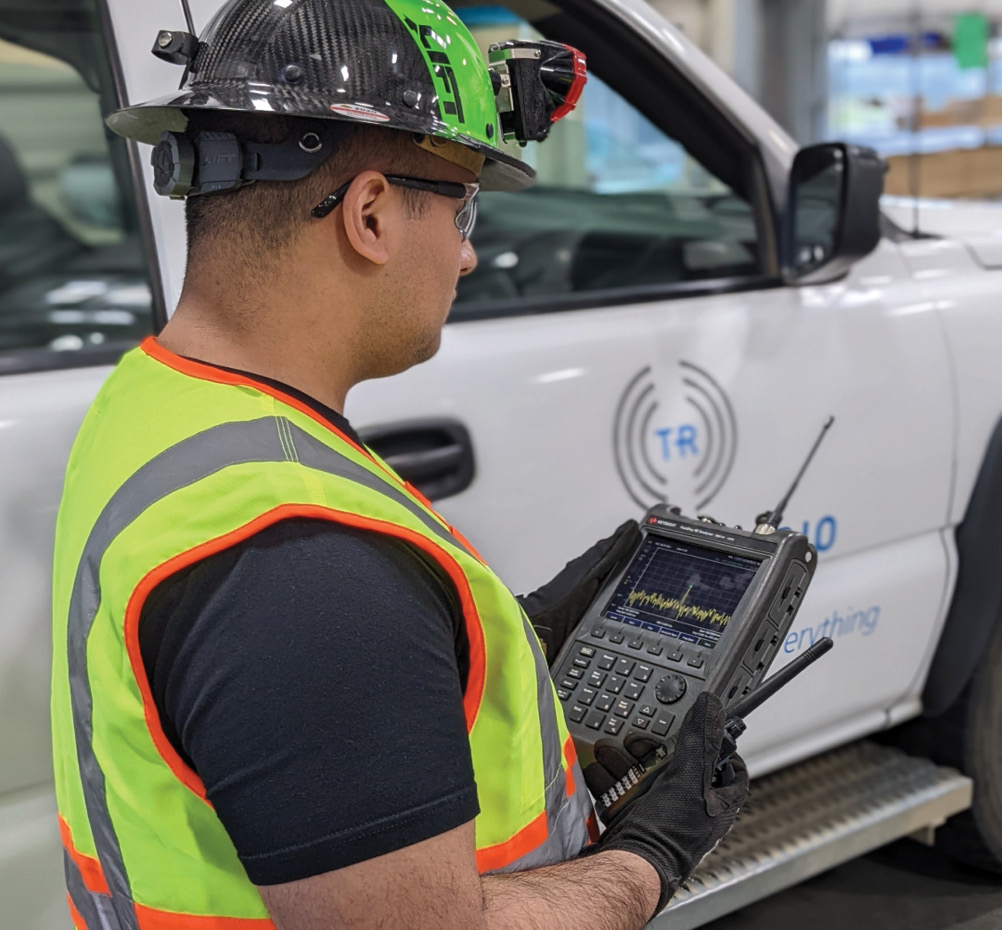Tunnel Radio offers some insight on the implementation process – and what mines can expect – for custom two-way radio and tracking systems.
By Nanette Dupuy

For workers in underground and remote environments like mines, reliable communication is paramount to worker efficiency and safety. Because underground range is affected by the height, width and number of turns in the enclosed area, these closed-space environments by their nature block radio signals, preventing effective underground communication.
Some have tried to address this problem by placing hard-wired phone systems at strategic locations. The use of these systems has proven to be very cumbersome, and often does little to help in emergency situations. Other systems have been developed that rely on wireless hotspots, but still lack the necessary full radio coverage of an entire site.
Leaky feeder-based RF coverage is a hybrid system that employs both wired and wireless technology. The leaky feeder cable is designed to “leak” radio signal in and out along its entire length, allowing it to function as an extended antenna.
As radio signal strength diminishes along the cable length, line amplifiers are inserted at regular intervals to boost signal strength back up to acceptable levels. In addition to transporting the RF signal, the center conductor of the LF cable also carries the DC power (typically 12 volts) for the amplifiers.
Power is provided by a base interface unit at the mine entry. The result: a very extensible, cost-effective system that is easy to maintain.
We specialize in two-way radio communication, as well as tracking systems, for mining as well as other areas such as rail and critical infrastructure including tunnels, dams, wastewater treatment facilities and more. We design, engineer and manufacture custom radio communication solutions, but also provide installation and training services. Also, because every situation and site is different, radio solutions are tailor-made to the specifications of our clients. What, though, goes into such a system, from start to finish?
HOW IT’S MADE

Every project and solution is unique, but the leaky feeder-based RF implementation process follows the same six phases.
1. Site visit
Every project begins with identification of the problem, such as an issue with underground communication, high-loss areas lacking a strong line of communication for their radio or tracking systems, or a number of other identified safety and logistics concerns.
Once the core problem is identified, a site visit is the most productive way to understand the parameters of the project. Depending on a project’s complexity, a site visit could take one to three days and include a propagation analysis, path analysis and a review of the current infrastructure in place in order to determine the best direction forward.
2. Engineering and design
Next comes system design, where RF engineers and technicians take a site’s infrastructure into account, along with data collected during the site visit, to design and develop a custom radio communications solution.
3. Quote and proposal
With a design in place, the wireless communication provider will provide a formal quote and proposal to the client based on the type of equipment and actual quantities to be used in the build. This quote will include both the equipment needed as well as installation costs.
4. Manufacturing
Once the proposal is accepted and processed, the build phase begins. Lead times range from a couple of days to six weeks for a full product suite, even with the supply chain issues that have arisen since 2020.
As an ISO-9001:2015 certified company, Tunnel Radio designs, engineers and manufactures its entire product line, from radio interface equipment and amplifiers for voice comms to active RFID tracking systems. We also design and build custom software for monitoring and tracking.
5. Installation
After system components are built and bench-tested, it’s time for installation. Technicians travel to the implementation site and work with a client’s on-site staff to ensure that the coax cabling, in-line amplifiers and antennas are installed to spec. Projects typically span 1-10 miles and technicians can install approximately one mile of system for every four to five hours of work.
6. Testing and training
Once installed, a full test and tune is completed to make sure the system is properly set and operational. Technicians will check radio frequencies and ensure power levels are set correctly throughout the entire system.
On-site training for technicians and other staff who will be supporting the new system follows installation. If clients are in need of assistance, we are there with 24/7 customer support from techs who have access to documentation of each unique system.
Nanette Dupuy is a compliance manager for Tunnel Radio.
